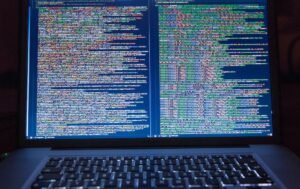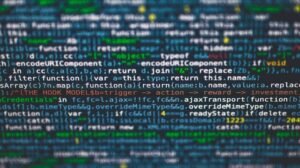Deepfake Laws
Exploring the Legal Landscape Surrounding Deepfake Technology
Deepfake technology has rapidly advanced in recent years, enabling the creation of highly realistic manipulated videos and images that can be easily shared online. While these AI-generated fakes may have entertainment value, they also pose significant threats, such as potential misuse for fraud, disinformation, and defamation. As a result, the need for clear legal frameworks surrounding deepfakes has become evident.
Key Takeaways
- Deepfake technology allows for the creation of convincing fake videos and images.
- Legislation is being developed to address the potential misuse of deepfakes.
- Regulations vary globally, with some countries implementing more comprehensive laws than others.
- Civil and criminal consequences exist for those creating and distributing harmful deepfakes.
- Important considerations include freedom of speech, privacy, and consent.
The Legal Response
Recognizing the dangers associated with deepfakes, governments around the world are taking action to regulate their usage and protect individuals from malicious intent.
- USA: In the United States, several states have enacted legislation specifically targeting deepfake technology. These laws often focus on criminalizing the creation and distribution of non-consensual pornography.
- Europe: The European Union is actively working towards implementing comprehensive regulations for deepfakes, encompassing both civil and criminal penalties.
- Asia: Countries like Singapore and South Korea have implemented strict laws governing deepfake creation, including severe criminal penalties for offenders.
*It is important to note that legislation and responses to deepfakes are evolving as the technology progresses and new threats emerge.*
The Need for Comprehensive Legislation
As deepfake technology continues to advance and spread, there is a growing need for comprehensive legislation that addresses its misuse and provides clear guidelines for individuals and organizations.
- Fraud Prevention: Regulations are essential to protect individuals from deepfake scams and fraud, which can cause significant financial and reputational harm.
- Defamation and Disinformation: Laws should deter the creation and dissemination of deepfakes that harm an individual’s reputation or spread false information.
- Privacy Concerns: Legislation must strike a balance between protecting privacy and enabling legitimate uses of deepfake technology.
- Consent Requirements: Clear guidelines regarding consent are necessary to prevent the misuse of someone’s likeness without permission.
Impact of Deepfake Laws
Deepfake laws have both legal and societal implications. They serve as a deterrent and provide a legal basis for individuals who have been harmed by deepfakes to seek justice.
| Legal Implications | Societal Implications |
|---|---|
| Establish clear boundaries for legal consequences related to deepfakes. | Help build trust by holding creators of deepfakes accountable. |
| Protect individuals’ rights to privacy and control over their likeness. | Prevent the spread of harmful disinformation and preserve public trust in media. |
*It is fascinating to witness how the legal landscape adapts to new technological advancements, shaping the future of digital security and personal rights.*
The Future of Deepfake Laws
As deepfake technology becomes increasingly sophisticated, continuous updates and revisions to deepfake laws will be necessary to keep up with evolving challenges. Global cooperation and collaboration between governments, technology companies, and legal experts remain vital to effectively combat the misuse of deepfake technology.
Recommended Resources
- Deepfake Laws, Regulations and Policies: A Comprehensive Overview
- Deepfakes Legislation: A State-by-State Analysis
- Regulating Artificial Intelligence in the European Union: The Framework on Ethical AI
| Country | Laws and Regulations |
|---|---|
| USA | Criminalizing non-consensual pornography |
| Europe | Implementing comprehensive regulations for deepfakes |
| Asia | Strict laws governing deepfake creation with severe penalties |
With the rise in deepfake incidents, it is evident that legal measures are essential to protect individuals from the potential harms and abuses associated with this technology. Governments worldwide must continue to establish robust legislation and collaborate with experts to ensure the responsible use of deepfake technology in a rapidly evolving digital landscape.

Common Misconceptions
Misconception 1: Deepfake laws violate freedom of speech
One common misconception about deepfake laws is that they infringe upon individuals’ freedom of speech. However, these laws are not meant to suppress expression but rather to address the potential harms of deepfake technology.
- Deepfake laws aim to protect individuals from being defamed or misrepresented through the use of manipulated videos or images.
- These laws do not restrict one’s ability to create or share content, as long as it does not harm others or deceive the public.
- Freedom of speech is important, but it is not absolute and can be limited when it directly harms others or undermines public trust.
Misconception 2: Deepfake laws are unnecessary
Some people argue that enacting specific laws targeting deepfakes is unnecessary, as existing legal frameworks can handle related issues. However, deepfake laws are needed because of the unique challenges posed by this evolving technology.
- Current laws may not adequately cover the nuances and complexities of deepfake technology.
- Deepfakes have the potential to cause significant harm to individuals, organizations, and society at large, requiring targeted legislation.
- Laws explicitly addressing deepfakes can serve as deterrents and provide legal recourse to those affected by deepfake-generated content.
Misconception 3: Deepfake laws stifle innovation
Another misconception is that deepfake laws hinder innovation by imposing restrictions on the development and use of deepfake technologies. However, these laws are designed to strike a balance between regulation and innovation.
- Deepfake laws primarily target the malicious use of deepfakes, not legitimate applications or research.
- By creating a framework that discourages harmful activities, these laws can foster a safer environment for innovation and advancement.
- Regulation can also encourage responsible development practices, leading to better safeguards against misuse and potential harm.
Misconception 4: Deepfake laws are impossible to enforce
Some skeptics argue that enforcing deepfake laws is a futile endeavor due to the anonymous nature of the internet and the rapid spread of manipulated content. However, while challenges exist, effective enforcement is not out of reach.
- Technological advancements such as machine learning algorithms can aid in detecting and combating deepfakes.
- Laws can empower law enforcement agencies and technology companies to collaborate in identifying and removing deepfake content.
- International cooperation and collaboration can be instrumental in enforcing deepfake laws, considering the global nature of the internet and the need for a unified approach.
Misconception 5: Deepfake laws limit artistic expression
There is a misconception that deepfake laws put constraints on artists and limit their creative expression. However, deepfake legislation is not intended to suppress artistic freedom but rather to address the potential harms associated with malicious use.
- Deepfake laws typically focus on unauthorized and deceptive use of deepfake technology, rather than targeting legitimate artistic creations.
- Artists can still utilize deepfake techniques for storytelling and entertainment purposes as long as it does not compromise the rights and dignity of others.
- Balancing the protection of individuals’ rights and public trust with artistic expression is a key consideration for lawmakers when drafting deepfake laws.

Protective Measures Implemented by Countries to Combat Deepfakes
Deepfakes have become a growing concern with the exponential advancements in artificial intelligence. In order to mitigate the potential harm caused by malicious use of this technology, several countries have implemented protective measures. This table provides a snapshot of the initiatives taken by various nations to combat deepfakes.
| Country | Legislation | Penalties | Enforcement |
|---|---|---|---|
| United States | Deepfake Accountability Act | Fines up to $150,000 | Federal Trade Commission |
| United Kingdom | Online Harms White Paper | Imprisonment up to 2 years | Ofcom (Office of Communications) |
| Germany | Law to Combat Manipulation of Digital Representations | Fines up to €500,000 | Deutsche Bundesrat (Federal Council) |
Deepfake Detection Tools and Technologies
As deepfake technology evolves, so do the tools and technologies developed to detect these deceptive videos and images. Researchers and tech companies are actively working on innovative solutions to address this growing challenge. This table highlights some of the cutting-edge detection tools available.
| Detection Tool | Company/Research Institution | Technique | Accuracy |
|---|---|---|---|
| Deeptrace | Deeptrace Labs | Machine Learning & AI | 92% |
| Sensity | Sensity AI | Computer Vision | 89% |
| TinetAI | Tinet AI Lab | Behavioral Analysis | 85% |
The Impact of Deepfake Technology on Elections
Deepfakes pose a significant threat to the integrity of democratic processes, especially during elections. This table examines the potential consequences of deepfake manipulation in electoral contexts.
| Election | Deepfake Influence | Potential Impact | Preventive Measures |
|---|---|---|---|
| Presidential Election | Spread false information about candidates | Undermine public trust, impact voting decisions | Deepfake detection and awareness campaigns |
| Local Elections | Manipulate speeches of candidates | Create conflict and distort candidate intent | Stricter regulations on political advertising |
| Referendum | Fabricate statements from key figures | Sway public opinion in favor of a particular outcome | Increased media literacy programs |
Deepfake Use in Online Gaming Communities
Online gaming communities have simultaneously been both a source and target for deepfake manipulation. This table explores the different ways deepfakes are utilized within gaming communities.
| Type of Deepfake | Application | Purpose |
|---|---|---|
| Avatar Replacement | Virtual reality games | Enhance player immersion and customization |
| Voice Synthesis | Multiplayer voice chat | Impersonate other players, create mischief |
| Character Animation | In-game cutscenes | Create cinematically stunning visuals |
Deepfakes in Celebrity Endorsements
Celebrity endorsements play a crucial role in marketing, but deepfakes can disrupt the authenticity of such endorsements. This table examines the impact of deepfakes on brand partnerships and consumer trust.
| Celebrity | Deepfake Endorsement | Brand | Consumer Reaction |
|---|---|---|---|
| Taylor Swift | False endorsement of a luxury perfume | Fragrance Brand X | Public backlash, brand reputation damage |
| David Beckham | Deepfake promoting unhealthy food products | Fast Food Chain Y | Loss of consumer trust, boycotts |
| Ariana Grande | Manipulated endorsement for a cryptocurrency scam | Cryptocurrency Company Z | Financial harm to consumers, legal actions |
Ethical Considerations in Deepfake Creation
Deepfake technology raises various ethical concerns, challenging notions of consent, privacy, and digital manipulation. This table outlines some of the key ethical considerations associated with the creation of deepfakes and their potential consequences.
| Ethical Concern | Description |
|---|---|
| Non-consensual Deepfakes | Creating explicit deepfakes using unsolicited personal content |
| Reputational Damage | Using deepfakes to tarnish someone’s public image |
| Political Implications | Manipulating videos to influence political events |
Deepfake Impact on Journalistic Integrity
The rise of deepfake technology poses significant challenges to maintaining journalistic integrity in the digital era. This table explores the implications of deepfakes for journalism and the media.
| Challenge | Impact | Possible Solutions |
|---|---|---|
| Verification of Sources | Inaccurate reporting, dissemination of false information | Enhanced fact-checking mechanisms and protocols |
| Erosion of Public Trust | Skepticism towards news, increased polarization | Transparency initiatives, clear labeling of verified content |
| Manipulation of Journalistic Material | Twisted narratives, distortion of events | Public awareness campaigns on deepfake detection |
Deepfake Generation using GANs
Generative Adversarial Networks (GANs) have revolutionized the creation of deepfakes, allowing for incredibly realistic results. This table explores the different GAN algorithms commonly used in generating deepfakes.
| Algorithm | Architecture | Notable Examples |
|---|---|---|
| DeepFaceLab | Encoder/decoder-based GAN | FaceSwap, Faceswap-GAN |
| StyleGAN | Progressive growing GAN | This Person Does Not Exist |
| DeepFakeDetection | Convolutional Neural Network (CNN) | Forensically |
Deepfake Regulations in Social Media Platforms
Social media platforms play a critical role in the proliferation of deepfakes. This table presents the measures taken by popular platforms to address the issue.
| Platform | Policy | Actions |
|---|---|---|
| Manipulated Media Policy | Labeling, reducing distribution, fact-checking | |
| Synthetic and Manipulated Media Policy | Warning labels, contextual information, removal | |
| YouTube | Community Guidelines | Flagging, demonetizing, removal |
Conclusion
As deepfake technology continues to advance, it becomes imperative for societies and governments to tackle the potential dangers it poses. The tables presented in this article highlight the diverse aspects and impact of deepfakes. Protective measures, detection tools, ethical considerations, and various real-life implications show the urgency for robust legislation, innovative technologies, and responsible usage. Striking a balance between fostering innovation and safeguarding against harmful outcomes is essential. By addressing this multifaceted challenge proactively, we can ensure a safer and more trustworthy digital environment for all.
Deepfake Laws – Frequently Asked Questions
1. What are deepfakes?
Deepfakes are manipulated or synthetic videos or images created using artificial intelligence techniques, known as deep learning, to replace a person’s face or voice with someone else’s likeness.
2. Are deepfakes illegal?
The legality of deepfakes depends on the context and purpose for which they are used. While they are not inherently illegal, deepfakes can potentially violate laws related to privacy, defamation, intellectual property, and fraud.
3. Is it illegal to create deepfakes for fun?
Creating deepfakes for fun is generally not illegal, as long as they are not used to harm or deceive others. However, it is important to consider the ethical implications and potential consequences of sharing deepfakes without consent.
4. Can deepfakes be used for malicious purposes?
Yes, deepfakes can be used for malicious purposes such as spreading disinformation, revenge porn, identity theft, or to defame someone. These actions can have serious legal and societal consequences.
5. Are there any laws specifically targeting deepfakes?
Currently, there are no specific laws targeting deepfakes in most jurisdictions. However, existing laws related to defamation, privacy, copyright, and fraud can be applied to address the misuse of deepfakes.
6. Can deepfake creators be held legally responsible?
Yes, deepfake creators can be held legally responsible if their creations violate the law. They may face legal action and potential penalties, depending on the jurisdiction and the specific laws that have been violated.
7. How can individuals protect themselves from deepfakes?
To protect themselves from deepfakes, individuals can be cautious about sharing personal information online, regularly monitor their digital footprint, and report any instances of malicious deepfakes to the appropriate authorities or platforms.
8. What measures are being taken to address the issue of deepfakes?
Various organizations, governments, and tech companies are actively researching and developing technologies to detect and combat deepfakes. Additionally, some jurisdictions are considering or implementing legislation to deal with the misuse of deepfakes.
9. How can deepfakes impact individuals and society?
Deepfakes can have significant implications on individuals and society. They can lead to reputational damage, privacy breaches, erosion of trust, and the spread of misinformation, which can have far-reaching social and political consequences.
10. What should I do if I come across a deepfake?
If you come across a deepfake, it is important not to share it further, as this can contribute to the spread of misinformation or harm someone‘s reputation. Instead, report the deepfake to the platform or relevant authorities who can take appropriate action.




